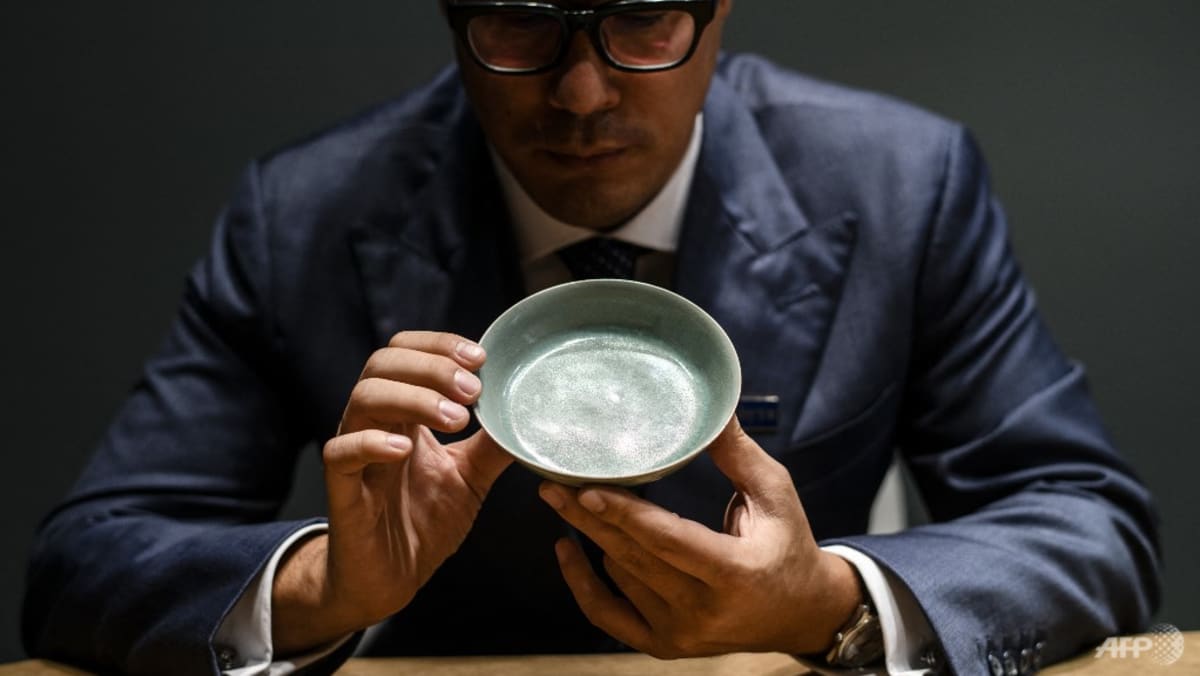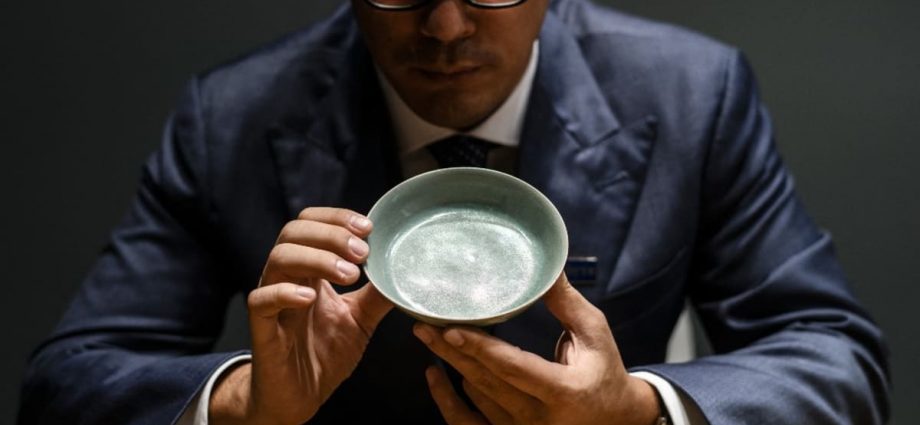
SINGAPORE: In October, a seemingly ordinary Chinese vase sold for an astronomical sum of money at an auction near Paris.
Valued at a respectable €2,000 (US$1,966), it sparked a bidding war among about 30 people at the auction in Fontainebleau, and eventually sold for €7.7 million – or €9.12 million including fees.
Auction lots actually exceed their estimates significantly on a fairly regular basis, though perhaps not by 4,000 times as seen for that tianqiuping, or “celestial sphere vase”.
This is particularly true in the realm of Chinese art and ceramics.
So how does this happen? How often does this happen? And could something you own be the next object to spark a bidding war?
To find out, CNA spoke to experts at two auction houses.
How does this happen?
Auction house Sotheby’s is used to works soaring well above their estimates, said Mr Nicolas Chow, its worldwide head and chairman of Chinese works of art.
“Those are usually top-quality pieces fresh to market and collections with impeccable provenance,” he said.
However, the expertise of specialists at top-tier auction houses means that they are unlikely to see margins like the one in Fontainebleau, Mr Chow added.
“We pride ourselves in our expertise and so our estimates are much more calibrated to the market than what might for example happen in a small country sale in France where one sometimes finds ‘sleepers’, that is, objects of great value and historical importance that have not been recognised as such and are under-catalogued,” he said.
New discoveries made after an estimate has been agreed upon can also send prices surging, said Ms Gigi Yu, Bonhams’ head of Chinese ceramics and works of art for Hong Kong.
“This can be a newfound prestigious provenance, research-proved evidence on its rarity or importance in history, or anything that speaks in favour of the value of the object,” she said.
“While auction house specialists are professionally trained to price the works as accurately as possible, collectors of Chinese art can themselves be deeply knowledgeable about what they collect too, so occasionally these discoveries can also come from them.”
A key factor in the price of the tianqiuping skyrocketing was the bidding war that it triggered. So what are the elements that can contribute to this kind of interest?
Ms Yu and Mr Chow both spoke of the significance of an object being fresh to the market.
“Generally speaking, objects that are fresh to the market, in good condition and with a trusted provenance are sought after in the market,” Ms Yu said.
“As to whether it triggers the bidding war, other factors – sometimes subjective – weigh in as well, just like any other items offered at auction.”
Mr Chow said that other factors include rarity, beauty, condition, historical importance, provenance and fashion.
“All these parameters will be calibrated differently depending on the period and nature of the work,” he said.
“Generally speaking, fresh and outstanding property, regardless of category – ceramics, paintings, jewellery, et cetera – is always highly sought-after.
“Objects can be controversial and sometimes our conservative estimates and guarantee lines will reflect a diversity of opinions.”

